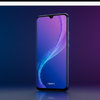The Vision for Mixed Reality: Now vs The Future!

Current State of Mixed Reality (MR) Technology
Mixed reality (MR) technology is currently at an intriguing stage, blending virtual reality (VR) and augmented reality (AR) to produce an immersive experience. This technology integrates virtual objects into the real world, enhancing user interaction with digital content in a more intuitive way.
Yet, MR technology faces certain challenges that hinder its widespread adoption. The bulkiness and discomfort of VR headsets, for instance, detract from prolonged usage. Users often experience discomfort and fatigue due to the size and weight of these headsets.
The visual quality of the virtual content is another area needing improvement. Despite advances like the Meta Quest 3 offering high resolution and low latency, issues remain, such as distortion of objects at close range or the edges of the visual field, and a noticeable difference in quality between virtual and real-world visuals.
Despite these hurdles, the Meta Quest 3 is a notable example of VR technology in 2023. It excels with features like color, stereo vision, and low latency, enhancing the realism of the user experience. The headset's advanced sensors facilitate a smoother transition between virtual and real-world settings.
A standout feature of the Meta Quest 3 is its hand tracking capability, allowing users to interact with digital content directly with their hands, making the experience more intuitive and immersive, and reducing the reliance on controllers.
However, the Meta Quest 3's primary focus is on gaming, which remains its major selling point. While it supports other applications, such as productivity and social experiences, gaming is where it truly shines, offering a wide array of VR-optimized games and experiences.
The future of MR technology looks promising, with expectations of smaller, more comfortable headsets resembling ordinary glasses, and more powerful hardware supporting a broader range of applications and experiences.
In summary, while MR technology still faces limitations, its current state is a fascinating preview of future possibilities. The Meta Quest 3 exemplifies the progress in VR technology, particularly in gaming. Continued advancements in hardware and software hold the potential to transform how we engage with digital content and our surroundings.
Software and Development Platforms
The evolution towards mixed reality marks a thrilling leap in technology. This blend of virtual reality and augmented reality forms an immersive experience for users, propelled by innovations in software and development platforms.
A comparison between earlier VR headsets and the Meta Quest 3 reveals substantial advancements. As of 2024, the Meta Quest 3 is a top contender in the VR headset market, boasting high resolution, reduced latency, and enhanced tracking. These features contribute to a seamless blend of virtual and real-world experiences for the user.
A standout feature of the Meta Quest 3 is its user-friendly setup. The device autonomously maps the room upon wearing, detecting available space and obstacles. This hassle-free setup enhances user convenience significantly.
The Meta Quest 3 also excels in hand tracking. This feature allows users to interact with virtual environments using just their hands, phasing out controllers for certain applications. Such intuitive interaction enriches the immersive experience.
In the gaming realm, the Meta Quest 3 shines with its array of VR-optimized games and experiences. Its technical prowess - high resolution, minimal latency, and superior tracking - makes for an engaging gaming experience.
Future developments in software and platforms are key to furthering mixed reality. We anticipate smaller, more comfortable headsets resembling regular glasses, alongside more powerful hardware. These advancements will broaden the scope of mixed reality applications.
In summary, the Meta Quest 3 epitomizes the progress in mixed reality software and development platforms. Its ease of setup, advanced tracking, and overall functionality place it among the top VR headsets. As the technology advances, mixed reality is poised to become an integral part of our daily lives.
The Future Vision of MR
As mixed reality (MR) technology evolves, we're seeing significant advancements, particularly in the realm of smart glasses. Companies like Meta are at the forefront, with products like the Meta smart glasses. These devices, though seemingly simple with features like cameras, speakers, and batteries, are packed with innovative capabilities. They're not yet universally adopted due to current technological limitations, but there's a clear path for future enhancements.
The trajectory for smart glasses is undoubtedly positive. We expect them to become smaller, more powerful, and feature-rich. Eventually, they'll resemble regular eyewear, making them more suitable for daily use. This evolution will enhance their appeal and practicality.
A standout feature of smart glasses is their user-friendly setup. For instance, the Meta Quest 3 glasses can autonomously map a room upon being worn, identifying space and objects without manual input. This ease of use makes them more accessible and appealing.
Another remarkable aspect is the improved hand tracking technology. This feature allows users to interact with digital elements through hand movements, bypassing the need for controllers in some scenarios. This development contributes to a more natural and engaging experience.
The competition between VR headsets and smart glasses is noteworthy. While VR headsets like the Meta Quest 3 are renowned for delivering immersive gaming experiences, smart glasses offer the benefits of being lightweight and more akin to regular glasses.
In summary, the future of MR is intrinsically linked to the evolution of smart glasses. As hardware and software enhancements continue, these devices will grow more efficient, functional, and attractive for regular use. This progression promises to transform our interaction with digital content and our surroundings, marking a new era in MR technology.
FAQ
1. Which is better, the Meta Quest 3 or the Apple Vision Pro?
When comparing the Meta Quest 3 and the Apple Vision Pro, it's important to note that each has its unique advantages. The Apple Vision Pro is often regarded as a premium option in mixed reality, boasting cutting-edge technology and performance. In contrast, the Meta Quest 3, while not as technologically advanced as the Apple Vision Pro, offers a robust virtual reality experience with a broad array of games and experiences tailored for its platform. The decision between these two depends largely on personal preferences and what aspects of the devices are most important to you.
2. What are the limitations of the Meta smart glasses?
The current iteration of Meta smart glasses, being a product of evolving technology, does have its limitations. These glasses incorporate basic features like a camera, speakers, and a battery. They offer a variety of functions but don't match the sophistication of some other smart glasses available. However, it's expected that future models will be more compact, powerful, and versatile, reflecting ongoing advancements in technology.
3. How long is the battery life of the Meta smart glasses?
Battery life for the Meta smart glasses varies based on how they're used. On a full charge, they can last several hours with normal use. However, activities that demand more power, such as taking photos or recording videos, may deplete the battery faster. To accommodate longer usage times, the glasses are accompanied by a wireless charging case, providing additional charges throughout the day.
4. Are there any other companies investing in mixed reality technology?
Indeed, numerous companies besides Meta are delving into mixed reality technology. While Meta leads with products like its smart glasses and VR headsets, Apple is also a significant player, especially with the anticipated release of the Apple Vision Pro. Other major tech corporations such as Microsoft, Google, and Facebook are also exploring this arena, each developing their own mixed reality devices and platforms.





